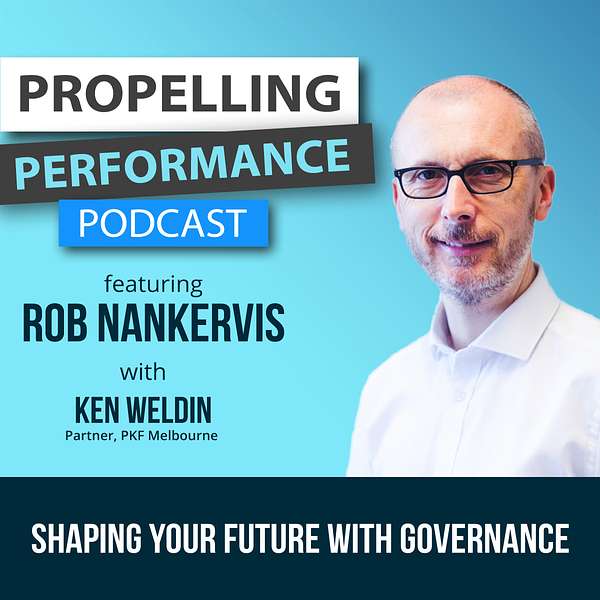
Propelling Performance
Propelling Performance
Shaping your future with governance
In Episode Eight, Rob speaks with Ken Weldin about shaping your future with governance. Ken shares his advice on the best approach to embedding good governance into your mid-tier business, by considering governance as a strategic approach to shaping the future of your organisation. Ken details some of the fears that hold organisations back, real-life examples of bad governance we have seen in the last 12-18 months and the key actions you can take to get started. He simplifies the process, concepts and language surrounding governance, so it is relevant and relatable – ‘keep it simple and use concepts that your organisation lives and breathes.”
“Your organisation will make hundreds if not thousands of decisions every day. So you may not realise it, but you're exercising governance at that point; which decisions do you take a chance on, which ones you do fast track, which do you rely on past experience to make a judgement? That's governance in action.” - Ken Weldin
Listen to discover:
· At its core, governance is about how you make decisions and focusing on how you make your organisation better
· Why you should look at governance as shaping the future and shaping change in a fair and equitable way
· “Systems, processes, charters, policies and minutes, there's a time and a place for that but governance shouldn't start with that. It’s about good decisions, enhancing value, protecting the future, shaping change.”
· Why some organisations fear governance is going to create a bureaucracy and slow them down
· Governance is about finding your own solution and translating it to people and what your company's trying to do. Make it personal and relevant to you.
· Ask the questions… How do we do that better? How do we do that with less impact on our stakeholders? How do we do that so that we come across as a fairer organisation?
· Real-life examples of bad governance from the last 12-18 months… an earnings downgrade, a customer dispute, a compliance failure, an ethical breach, fraud, money laundering issues, late payment of suppliers, underpayment of staff, cyber breach, false advertising, poor disaster recovery, poor Occupational Health and Safety, poor reputational management and stakeholder engagement.
· How a proactive risk framework will enable you to anticipate the impact of major external events
· The importance of scenario planning, evaluating risk and pausing to measure success
· “If it ain’t broke, fix it before someone else does.”
· Encourage boards and management teams to consider…
- If a product is selling really well, why? Why do people keep coming back?
- What is the implicit promise that keeps them coming back to us?
- How do we protect that? How do we make sure that nothing goes wrong?
“Work out the invisible thing that keeps people coming back to you. Put in place the ideas, goals and steps you need to protect that, then reassess how you will anchor to that as your purpose.” - Ken Weldin
Take action!
- Consider hiring an advisor, unless you are comfortable and motivated to handle the process yourself. Sometimes it’s helpful to have an external perspective.
- Do you want to keep the status quo or change and evolve? You need checks and balances, strategies, initiatives and processes to enable that to happen in a sensible manner.
- How do you explain to someone who's never met you, what your organisation does? What do you really do and what do you want to do? What's the invisible promise that keeps you coming back?